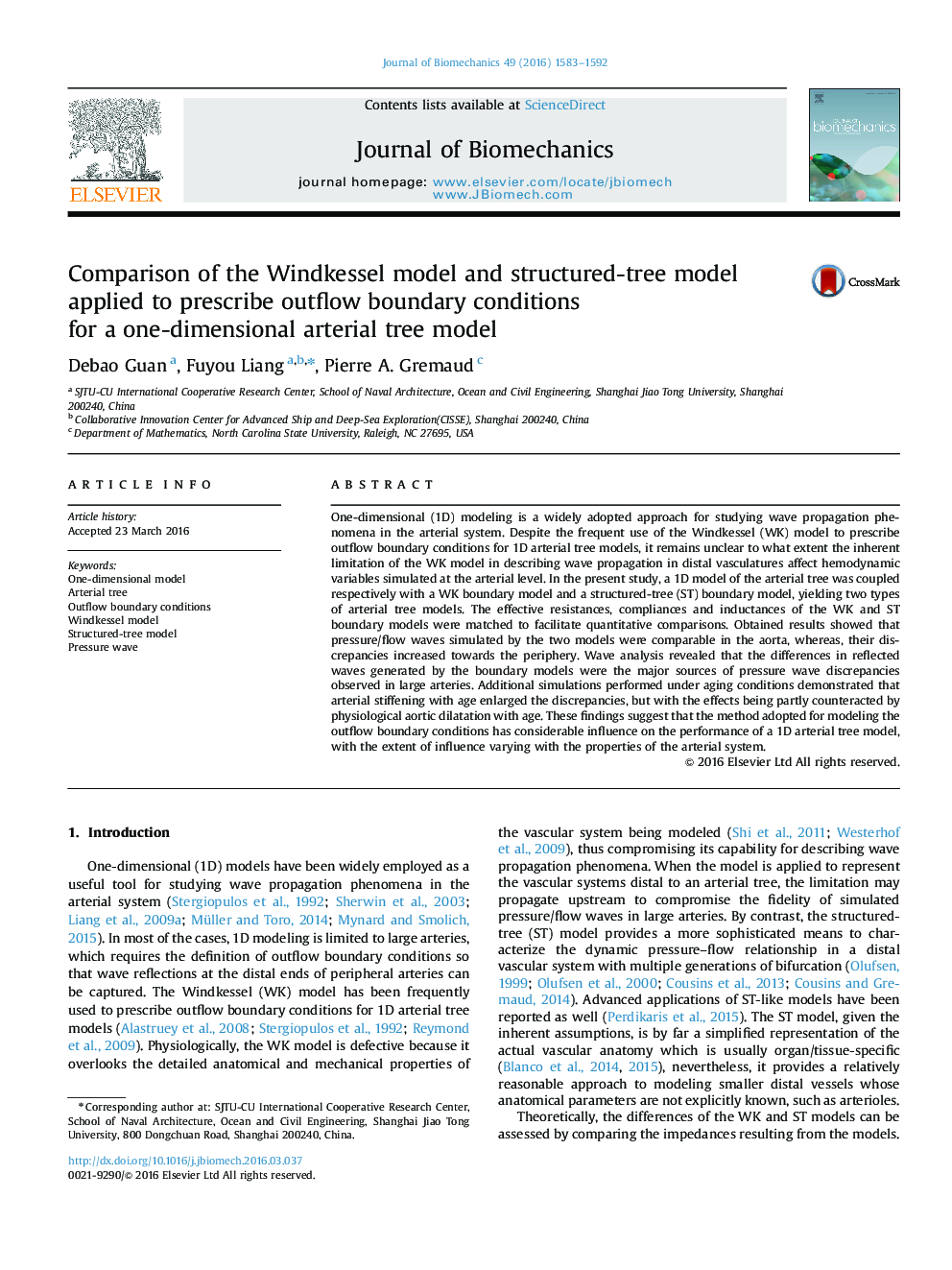| Article ID | Journal | Published Year | Pages | File Type |
|---|---|---|---|---|
| 10431050 | Journal of Biomechanics | 2016 | 10 Pages |
Abstract
One-dimensional (1D) modeling is a widely adopted approach for studying wave propagation phenomena in the arterial system. Despite the frequent use of the Windkessel (WK) model to prescribe outflow boundary conditions for 1D arterial tree models, it remains unclear to what extent the inherent limitation of the WK model in describing wave propagation in distal vasculatures affect hemodynamic variables simulated at the arterial level. In the present study, a 1D model of the arterial tree was coupled respectively with a WK boundary model and a structured-tree (ST) boundary model, yielding two types of arterial tree models. The effective resistances, compliances and inductances of the WK and ST boundary models were matched to facilitate quantitative comparisons. Obtained results showed that pressure/flow waves simulated by the two models were comparable in the aorta, whereas, their discrepancies increased towards the periphery. Wave analysis revealed that the differences in reflected waves generated by the boundary models were the major sources of pressure wave discrepancies observed in large arteries. Additional simulations performed under aging conditions demonstrated that arterial stiffening with age enlarged the discrepancies, but with the effects being partly counteracted by physiological aortic dilatation with age. These findings suggest that the method adopted for modeling the outflow boundary conditions has considerable influence on the performance of a 1D arterial tree model, with the extent of influence varying with the properties of the arterial system.
Related Topics
Physical Sciences and Engineering
Engineering
Biomedical Engineering
Authors
Debao Guan, Fuyou Liang, Pierre A. Gremaud,
